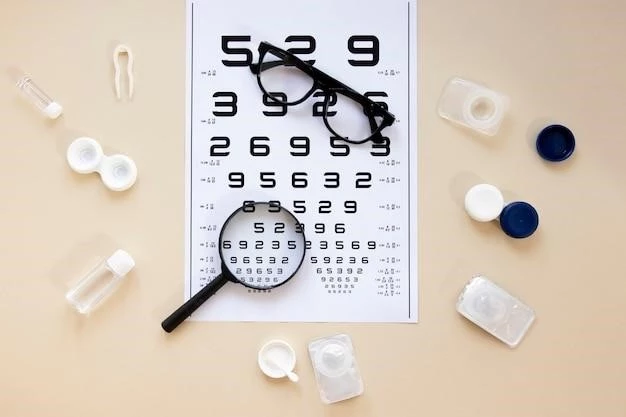Introduction to Optic Atrophy
Optic neuropathy refers to damage to the optic nerve from various causes, leading to vision issues. The optic nerve is crucial for transmitting visual signals from the eye to the brain. Optic atrophy, on the other hand, involves the degeneration of the optic nerve, resulting in vision deterioration.
Definition of Optic Atrophy
Optic atrophy refers to the degeneration or death of the retinal ganglion cell axons that make up the optic nerve, leading to a pale appearance of the optic disc. This condition results in vision impairment due to the damage to the optic nerve, which is essential for transmitting visual signals from the eye to the brain. Vision loss, reduced visual field, dimming of vision, loss of fine detail perception, color fading, and decreased pupil reactivity to light are common characteristics of optic atrophy.
Causes of optic atrophy can vary, including genetic defects, inflammatory diseases, neurological disorders, tumors, aneurysms, traumatic injuries, toxic exposure, nutritional deficiencies, and conditions like multiple sclerosis. Optic nerve atrophy can also be associated with congenital abnormalities or developmental issues. Early intervention and treatment before the progression of optic atrophy may help preserve remaining vision, although there is no definitive reversal of optic nerve damage.
Causes of Optic Atrophy
Optic atrophy can be caused by various factors, including infections (e.g. toxoplasmosis, herpes simplex), inflammatory diseases, neurological disorders, certain medications, dietary deficiencies, toxins (e.g. methanol, alcohol, tobacco), pituitary or optic nerve tumors, aneurysms, hereditary and traumatic optic neuropathies, toxic and nutritional optic neuropathies, retrobulbar neuritis, and multiple sclerosis.
Various Factors Leading to Optic Neuropathy
Optic neuropathy, resulting in optic atrophy, can be attributed to a range of factors such as infections like toxoplasmosis and herpes simplex, inflammatory diseases, neurological disorders, specific medications, dietary deficiencies, and exposure to toxins like methanol, alcohol, and tobacco. Other causative factors include pituitary or optic nerve tumors, aneurysms, hereditary and traumatic optic neuropathies, toxic and nutritional optic neuropathies, retrobulbar neuritis, and conditions like multiple sclerosis.
Etiology of Primary Optic Atrophy
The causes of primary optic atrophy are diverse, ranging from conditions such as pituitary or optic nerve tumors, aneurysms, hereditary and traumatic optic neuropathies, toxic and nutritional optic neuropathies, retrobulbar neuritis, to multiple sclerosis. These factors can lead to the degeneration of the retinal ganglion cell axons, contributing to the development of optic atrophy and subsequent vision impairment.
Genetic Causes⁚ Leber’s Hereditary Optic Neuropathy and Dominant Optic Atrophy
Leber’s Hereditary Optic Neuropathy (LHON) and Dominant Optic Atrophy (DOA) are genetic disorders that can lead to optic nerve damage and subsequent optic atrophy. LHON is primarily caused by mutations in the mitochondrial DNA, affecting the energy-producing capability of cells in the optic nerve, leading to vision loss. On the other hand, DOA is associated with mutations in nuclear genes, resulting in the degeneration of retinal ganglion cells responsible for transmitting visual information to the brain. Understanding the genetic basis of these conditions is crucial for diagnosis and potentially targeted treatment strategies.

Symptoms of Optic Atrophy
Optic atrophy presents with symptoms such as vision dimming, reduced visual field, loss of fine detail perception, faded colors, decreased pupil reactivity, and potential total loss of the pupil’s light response. These manifestations are indicative of optic nerve damage and subsequent vision impairment.
Vision Impairments Associated with Optic Nerve Atrophy
Optic nerve atrophy results in vision impairments like dimming vision, reduction in visual field, loss of fine detail perception, faded colors, decreased pupil reactivity to light, and potential total loss of the pupil’s light response. These symptoms are indicative of optic nerve damage and subsequent vision deterioration.
Diagnosis of Optic Atrophy
Diagnosing optic atrophy involves assessing symptoms like vision dimming and reduced visual field, along with careful examination of the optic disc for signs of pallor. Additionally, imaging techniques such as MRI play a crucial role in detecting optic nerve damage and confirming the presence of optic atrophy.
Role of MRI in Detecting Optic Nerve Damage
Magnetic Resonance Imaging (MRI) plays a pivotal role in the diagnosis of optic atrophy by detecting optic nerve damage. MRI scans can reveal optic nerve hyperintensity or atrophy, indicating severe optic nerve damage, particularly in conditions like glaucoma. Abnormal MRI findings in patients with optic atrophy can provide critical insights into the extent of optic nerve damage and guide treatment decisions.
Types of Optic Atrophy
Various forms of optic atrophy exist, including Dominant Optic Atrophy (DOA), Traumatic Optic Neuropathy, and Congenital Optic Atrophy. Each type presents with unique characteristics and may result from different underlying causes, contributing to vision impairment.
Dominant Optic Atrophy (DOA)
Dominant Optic Atrophy (DOA) is an inherited condition that results in the loss of retinal ganglion cells, which transmit visual information from the retina to the brain. Genetic mutations in the mitochondrial and nuclear genomes are linked to DOA, impacting the optic nerve and leading to vision impairment.
Traumatic Optic Neuropathy
Traumatic Optic Neuropathy is characterized by vision loss resulting from trauma to the optic nerve. Injuries can be direct or indirect, with different locations affecting the severity. Understanding the type and extent of optic nerve damage is crucial in managing traumatic optic neuropathy and potential optic atrophy development.
Congenital Optic Atrophy
Congenital Optic Atrophy refers to optic atrophy present at birth or developed during early childhood. This condition may result from genetic factors, developmental abnormalities, or inflammatory processes impacting the optic nerve’s growth and function. Understanding the underlying causes of congenital optic atrophy is essential in guiding treatment strategies and managing vision impairment from an early age.
Treatment Options for Optic Atrophy
While there is no definitive treatment to reverse optic atrophy, early intervention can help preserve remaining vision. Intravenous steroids have shown efficacy in cases of optic neuritis, but their role in arteritic anterior ischemic optic neuropathy remains controversial. The key lies in initiating treatment before optic atrophy develops.
Management Approaches for Optic Neuropathy
Management of optic neuropathy aims to address underlying causes such as infections, inflammatory diseases, and neurological disorders. Intravenous steroids are effective in optic neuritis but controversial in arteritic anterior ischemic optic neuropathy. Early intervention before optic atrophy development can help preserve vision.
Controversies Surrounding Steroid Treatment
Intravenous steroids are effective in optic neuritis but controversial in arteritic anterior ischemic optic neuropathy. While proven beneficial in certain cases, their role in optic atrophy treatment remains debatable due to mixed outcomes. Careful consideration and individualized approach are essential in deciding the use of steroids in managing optic atrophy.

Prognosis and Outlook
Optic atrophy carries a challenging prognosis, as there is no definitive treatment to reverse the condition. However, early intervention and management of underlying causes can help preserve existing vision and potentially prevent further vision loss. The administration of intravenous steroids in instances of optic neuritis has shown efficacy, although controversies surround their use in arteritic anterior ischemic optic neuropathy. Individualized treatment plans, coupled with prompt intervention prior to the progression of optic atrophy, are crucial in optimizing outcomes and preserving visual function.
